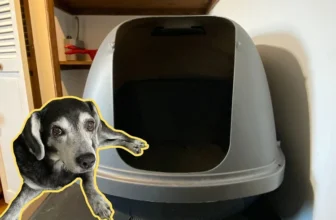As a pet owner, it can be heartbreaking to witness your furry friend suffer from separation anxiety. American Wirehairs, in particular, are known to struggle with this issue. If left unaddressed, separation anxiety can have a devastating impact on your pet’s mental and physical health. But is medication a viable solution? In this article, we’ll explore the causes and symptoms of separation anxiety in American Wirehairs, treatment options including medication, and what to expect when seeking advice from a veterinarian.
Understanding Separation Anxiety in American Wirehairs

Understanding Separation Anxiety in American Wirehairs is crucial for owners who want to provide the best possible care for their pets. Separation anxiety is a real issue that numerous American Wirehair owners face, causing their beloved pets to exhibit distress and destructive behavior when left alone. This section will explore what separation anxiety is, signs to look out for, causes, and the impact it can have on American Wirehairs. To learn more about preventing and managing separation anxiety, check out our article on Preventing and Managing Separation Anxiety in American Wirehairs.
What is Separation Anxiety?
Separation anxiety is a behavioral disorder that occurs when animals become distressed over being separated from their owners or primary caregivers. As social animals, American Wirehairs can become attached to their owners and feel anxious or lonely when left alone for extended periods of time. This can cause them to engage in destructive behavior, vocalize excessively, or even harm themselves.
To be diagnosed with separation anxiety, an American Wirehair must display excessive and persistent distress when left alone or separated from their owner, which is not due to another medical or behavioral issue. Separation anxiety can be experienced by cats of all ages, but it is most commonly seen in young cats.
The table below highlights some common behaviors that American Wirehairs with separation anxiety may exhibit:
| COMMON BEHAVIORS OF A CAT WITH SEPARATION ANXIETY |
|---|
| Excessive vocalization (meowing, crying, or howling) when left alone |
| Destructive behavior (scratching furniture, doors, and windowsills) |
| Pacing or restlessness in anticipation of the owner’s return |
| Urination or defecation outside of the litter box |
| Decreased appetite or unwillingness to eat when left alone |
If you notice your American Wirehair displaying any of these behaviors while you are away from home, it may be a sign of separation anxiety. Understanding the signs of separation anxiety in American Wirehairs is crucial for early intervention and effective treatment.
It is important to note that American Wirehairs with mild separation anxiety can often be trained to feel more comfortable when left alone. However, more severe cases of separation anxiety may require professional treatment. In the next sections, we will discuss various treatment options available for American Wirehairs with separation anxiety and the benefits and risks of each. For more information on the signs of separation anxiety in American Wirehairs, please see our article “Signs of Separation Anxiety in American Wirehairs.”
Signs of Separation Anxiety in American Wirehairs
One of the first steps in treating separation anxiety in American Wirehairs is being able to identify the signs. Separation anxiety can manifest in a variety of ways and may vary from pet to pet. The following table outlines common signs of separation anxiety in American Wirehairs:
| Signs of Separation Anxiety in American Wirehairs |
|---|
| Excessive barking, whining, or howling when left alone |
| Destructive behavior, such as chewing or digging, when left alone |
| Attempts to escape from the house or crate when left alone |
| Urinating or defecating indoors, even if house-trained |
| Refusal to eat or drink when left alone |
| Pacing or restlessness when left alone |
| Anxiety or depression, including lethargy or loss of interest in activities |
It can be difficult to determine whether these behaviors are due to separation anxiety or another underlying issue. However, if your American Wirehair exhibits several of these behaviors when left alone or becomes visibly anxious as you prepare to leave the house, it may be a sign of separation anxiety. To prevent these behaviors and reduce anxiety in your pet, consider implementing behavioral training strategies or making environmental changes in your home. Additionally, speaking with a veterinarian about medication options may also be helpful. For more information on training American Wirehairs with separation anxiety or the importance of exercise in reducing separation anxiety, please check out our articles on training American Wirehairs with separation anxiety and the importance of exercise in reducing separation anxiety in American Wirehairs.
Causes of Separation Anxiety in American Wirehairs
Separation anxiety is a complex issue that can have many potential causes in American Wirehairs. Understanding these underlying factors is essential for effective treatment. Some of the most common causes of separation anxiety in American Wirehairs are highlighted in the table below:
| Cause | Description |
|---|---|
| Early Separation from Mother | Being separated from their mother at an early age can lead to American Wirehairs developing an attachment to their owners that is very similar to the bond they would have with their mother. They may become anxious when left alone and feel a sense of abandonment. |
| Past Trauma or Abuse | Some American Wirehairs may have had negative experiences in their past, such as abuse or neglect. This can lead to separation anxiety as they associate being alone with these traumatic experiences. |
| Change in Routine | American Wirehairs are creatures of habit, and any significant change in their daily routine can cause stress and anxiety. This could include a change in work schedule, moving to a new home, or the loss of a family member or companion. |
| Lack of Socialization | Proper socialization is essential for American Wirehairs to learn how to interact with other animals and people. If they are not socialized at an early age, they may become overly attached to their owners and develop separation anxiety when left alone. |
| Medical Issues | Some medical issues can cause anxiety in American Wirehairs. This could include pain, gastrointestinal problems, or a hormonal imbalance. It is important to rule out any underlying medical issues before treating separation anxiety with medication or behavioral therapy. |
If you are interested in learning more about American Wirehair separation anxiety, click here to read our in-depth article on the subject.
The Impact of Separation Anxiety on American Wirehairs
Separation Anxiety can have a significant impact on American Wirehairs causing them to feel immense stress and discomfort. The table below outlines the various symptoms which may be experienced by American Wirehairs due to separation anxiety and the corresponding effects which it may have on their physical and emotional well-being.
| Symptoms | Effects |
|---|---|
| Excessive barking or whining | Can cause throat irritation and result in breathing difficulties |
| Scratching at doors or walls | Can cause damage to both the claws and the walls or doors themselves |
| Urinating or defecating in inappropriate places | Can result in unsanitary living conditions and possible health issues for both the American Wirehair and its owners |
| Depression or lethargy | Can result in decreased physical activity and potential weight gain |
| Loss of appetite | Can cause malnutrition and result in weight loss, weakness and other health issues |
These symptoms can have a cumulative effect on the health of American Wirehairs causing them to become physically weak and emotionally overwhelmed. It is important to address separation anxiety as soon as possible to prevent long-term damage to the health and well-being of your beloved pet.
Treatment Options for Separation Anxiety in American Wirehairs

Dealing with separation anxiety in American Wirehairs can be a challenging experience for both pet owners and their furry friends. However, there are several treatment options available that can help alleviate symptoms and improve the quality of life for your pet. From behavioral therapy to environmental changes, and even medication, it’s important to explore all available options in order to determine the best course of action. In this section, we’ll take a closer look at some of the most effective treatment options available for American Wirehairs suffering from separation anxiety.
Behavioral Therapy
Behavioral therapy is one of the most effective methods of treating separation anxiety in American Wirehairs. This type of therapy focuses on modifying the behavior of your pet through training, exercise, and positive reinforcement. Here are some techniques that may be helpful:
- Desensitization: This involves gradually getting your American Wirehair used to being left alone. You can start by leaving for short periods of time and gradually increasing the duration. This helps your pet to realize that you will always come back.
- Counterconditioning: This involves creating positive associations with being alone. You can give your pet a special treat or toy that they only get when they are alone. This makes being alone a positive experience for them.
- Exercise: Make sure your American Wirehair is getting enough exercise. A tired pet is less likely to experience anxiety when left alone.
- Training: Teaching your pet basic obedience commands such as “sit,” “stay,” and “come” can help build their confidence and reduce anxiety.
- Environmental enrichment: Providing your pet with toys, puzzles, and activities can help keep them entertained and reduce anxiety.
It’s important to remember that behavioral therapy can take time and patience, but it can be very effective in reducing separation anxiety in American Wirehairs. Consistency and positive reinforcement are key to success. If you are unsure about where to start, it may be helpful to consult a professional animal behaviorist for guidance.
Environmental Changes
American Wirehairs suffering from separation anxiety can benefit greatly from changes to their environment. Making adjustments to their surroundings can reduce stress and provide a calmer living space. Here are a few environmental changes that can help:
| Environmental Change | Description |
|---|---|
| Provide Plenty of Entertainment | Make sure your American Wirehair has plenty of toys and activities to keep them occupied while you’re away. Puzzle toys and treat dispensers can be used to keep them stimulated for longer. |
| Consider Crate Training | Some Wirehairs feel safer in a crate and may benefit from crate training. This can help establish a designated safe space for the cat to retreat to when feeling anxious. |
| Leave a Comfortable Space | Try leaving a comfortable space for your Wirehair while you’re away. A soft bed or blanket in a cozy corner of the house can help them feel more secure. |
| Reduce Outside Noise | If your cat is easily startled by outside noise, try reducing the volume. Closing windows and doors may help, and playing soothing background noise such as classical music can create a calm environment. |
| Establish a Routine | Establish a set routine for your American Wirehair, which can help reduce stress and make them feel more secure. Keep their feeding times, playtimes, and bedtime consistent, and try to stick to a regular schedule. |
Remember: Environmental changes alone may not be enough to treat separation anxiety in American Wirehairs. A combination of treatment options, including medication and therapy, may be necessary for best results. Consult with a veterinarian to determine the best course of action for your pet.
Medications for Separation Anxiety
There are several types of medications that can be prescribed to help treat separation anxiety in American Wirehairs. These medications are typically used in conjunction with behavioral therapy and environmental changes to create a comprehensive treatment plan. Below are some commonly prescribed medications and their benefits and risks:
| Medication | Description | Benefits | Risks and Side Effects |
|---|---|---|---|
| Fluoxetine (Prozac) | A selective serotonin reuptake inhibitor (SSRI) that increases the amount of serotonin in the brain. | – Can decrease anxiety and fear – Can help regulate mood and behavior – Can be used long-term |
– Can take up to 6 weeks to see full effects – Can cause gastrointestinal upset, loss of appetite, and lethargy in some pets – May interact with other medications |
| Diazepam (Valium) | A benzodiazepine that works by increasing the activity of GABA, an inhibitory neurotransmitter that produces a calming effect. | – Can reduce anxiety and promote relaxation – Has a sedative effect that can help American Wirehairs sleep – Fast-acting |
– Can cause drowsiness, lethargy, and ataxia – Can be habit-forming and lead to dependence – Can interact with other medications |
| Alprazolam (Xanax) | Another benzodiazepine that has a similar mode of action to diazepam. | – Can reduce anxiety and promote relaxation – Can be used for short-term solutions |
– Can cause drowsiness, lethargy, and ataxia – Can be habit-forming and lead to dependence – May interact with other medications |
| Clomipramine (Clomicalm) | A tricyclic antidepressant that works by inhibiting reuptake of serotonin and norepinephrine. | – Can decrease anxiety and help regulate mood – Can be used long-term – Can be effective for obsessive-compulsive disorders |
– Can take up to 6 weeks to see full effects – Can cause gastrointestinal upset, dry mouth, and lethargy in some pets – May interact with other medications |
It is important to note that medication should only be prescribed by a veterinarian after a thorough consultation and evaluation of the American Wirehair’s medical history and current condition. The benefits and risks of each medication should also be thoroughly discussed with the veterinarian before starting treatment.
Benefits of Using Medication
Using medication to treat separation anxiety in American Wirehairs can have several benefits. Here are a few examples:
- Effective treatment: Medications prescribed by veterinarians can be highly effective in reducing the symptoms of separation anxiety in American Wirehairs. These medications can provide quick relief and can help prevent the onset of more serious behavioral issues arising from prolonged anxiety.
- Reduced stress: Separation anxiety can cause significant stress for both the cat and their owner. Treating the issue with medication can reduce the cat’s level of stress and anxiety, making them more comfortable and relaxed when alone.
- Improved quality of life: Separation anxiety can significantly impact a cat’s quality of life, causing them to feel anxious, depressed, and unable to enjoy their favorite activities. Treating this condition with medication can help improve their overall mood and bring back a sense of joy and contentment to their daily life.
- Better behavior: When American Wirehairs suffer from separation anxiety, they may engage in destructive behavior, such as scratching furniture or excessive meowing. Treating their anxiety with medication can help reduce these negative behaviors and make them more pleasant companions when left alone.
Of course, it’s important to keep in mind that medication should always be used in conjunction with other treatment options, such as behavioral therapy and environmental changes, and under the supervision of a veterinarian. By taking a comprehensive approach to treating separation anxiety, American Wirehair owners can help their cats live happier, healthier lives.
Risks and Side Effects of Medication
It is important to note that while medication can be effective in treating separation anxiety in American Wirehairs, there are also potential risks and side effects that should be considered before deciding to use medication as a treatment option. Some of the risks and side effects associated with anti-anxiety medications for pets include:
| Risk/Side Effect | Description |
|---|---|
| Dependency | Some anti-anxiety medications have the potential to create dependency in pets, leading to withdrawal symptoms if the medication is discontinued. |
| Vomiting and Diarrhea | These are common side effects of anti-anxiety medication for pets, which can be uncomfortable for the animal and require additional medical intervention. |
| Sedation | While sedation can be an effective way to calm an anxious pet, it can also make the animal lethargic, less active, and less interested in its surroundings. |
| Aggression | In rare cases, anti-anxiety medication can cause aggression in pets, which can be dangerous for both the animal and its owner. |
| Allergic Reactions | Some anti-anxiety medications can cause allergic reactions in pets, which can range from mild symptoms like itching and rashes to more severe symptoms like breathing difficulties. |
It is important to discuss the potential risks and side effects of medication with a veterinarian, and to carefully weigh the benefits and drawbacks before deciding to use medication as a treatment option for American Wirehair separation anxiety. Additionally, medications should always be used in conjunction with behavioral therapy and environmental changes to create a comprehensive treatment plan.
Consulting a Veterinarian
If you have tried behavioral therapy and environmental changes but your American Wirehair is still exhibiting signs of separation anxiety, it might be time to consult a veterinarian. While medication may not be the first option to consider, a veterinarian can help determine if it’s necessary. It’s important to understand when to seek the advice of a veterinarian, what to expect during the visit, and the available medications that can help alleviate your feline companion’s separation anxiety. Let’s dive deeper into how a veterinarian can assist in treating separation anxiety in American Wirehairs.
When to Consult a Veterinarian
As a pet owner, it can sometimes be difficult to know when to seek professional help for your American Wirehair’s separation anxiety. While some mild anxiety and stress is common in pets, if it starts to interfere with their daily routine and happiness, it may be time to seek veterinary assistance.
Here are some signs that indicate it’s time to consult a veterinarian:
| Signs | Explanation |
|---|---|
| Excessive drooling or panting | These may be signs of stress and anxiety and can ultimately lead to dehydration and other health issues. |
| Destructive behavior when left alone | If your American Wirehair is exhibiting destructive behavior, such as scratching furniture or chewing on inappropriate objects in your absence, it may be a sign of separation anxiety. |
| Changes in eating or sleeping habits | Loss of appetite or decreased sleep can be markers of stress and anxiety in pets. If these persist for an extended period of time, consulting a vet is recommended. |
| Aggression | Separation anxiety can cause an American Wirehair to become easily agitated or aggressive towards people or other animals. |
| Escape attempts | Attempting to escape, digging holes, or jumping over fences are alarming behaviors that may indicate your American Wirehair is experiencing severe anxiety when left alone. |
It’s important to note that the severity and frequency of these behaviors can vary, and it’s best to seek veterinary advice if you are concerned about your pet’s mental and physical health. By getting a professional diagnosis and treatment plan, you can help reduce your American Wirehair’s separation anxiety and improve their quality of life.
What to Expect During a Veterinary Visit
When you consult a veterinarian for your American Wirehair’s separation anxiety, there are a few things you can expect during your visit. Here are some of the key things to keep in mind:
- Physical Exam: Your veterinarian will begin by examining your American Wirehair to ensure that there are no underlying medical conditions that could be contributing to their anxiety. They may check for signs of infections, inflammations or any other potential health issues.
- Discussion of Symptoms: You should be prepared to discuss your American Wirehair’s symptoms of separation anxiety in detail. This will include any behaviors that they exhibit when you’re not at home, such as excessive meowing, scratching, or chewing. You may also be asked to describe how your American Wirehair behaves when you return home.
- Assessment of Environment: Your veterinarian will likely ask you questions about your American Wirehair’s living environment. They may ask about the layout of your home, whether or not you have other pets, and what kind of toys and enrichment activities your American Wirehair has access to when you’re not at home.
- Treatment Options: Based on the information you provide, your veterinarian will provide you with a treatment plan for your American Wirehair’s separation anxiety. This may include behavioral therapy, environmental changes, and/or medication.
- Follow-Up Care: Your veterinarian will likely schedule follow-up appointments to monitor your American Wirehair’s progress and make any necessary adjustments to their treatment plan.
It’s important to keep in mind that every veterinarian may have their own approach to treating separation anxiety in American Wirehairs, so don’t be afraid to ask questions and seek clarification if you’re unsure about anything. Remember that your veterinarian is there to support you and your pet, and to help you find the best treatment plan to address your American Wirehair’s separation anxiety.
Medications Available Through a Veterinarian
Veterinarians have several options for medications to treat American Wirehair separation anxiety. These medications can be used alone or in combination with behavioral therapy and environmental changes. It is important to consult a veterinarian before starting any medication for your pet. Here are some of the medications that may be available through a veterinarian:
- Clomipramine – This medication is classified as a tricyclic antidepressant and is FDA-approved for the treatment of separation anxiety in dogs. It works by increasing levels of serotonin in the brain, which can help to reduce anxiety. It may take several weeks of use before improvement in behavior is seen.
- Fluoxetine – This medication is classified as a selective serotonin reuptake inhibitor (SSRI) and is FDA-approved for the treatment of separation anxiety in dogs. It works by increasing levels of serotonin in the brain, which can help to reduce anxiety. This medication may also take several weeks of use before improvement is seen.
- Diazepam – This medication is also known as Valium and is classified as a benzodiazepine. It can be used to treat separation anxiety in American Wirehairs as it has an anxiolytic, sedative, and muscle relaxant effect. Diazepam should be used with caution as it can be addictive.
- Lorazepam – This medication is classified as a benzodiazepine and is often used for short-term treatment of separation anxiety in pets. It has anxiolytic, sedative, and muscle relaxant effects. Like Diazepam, Lorazepam should be used with caution.
- Trazodone – This medication is classified as a serotonin antagonist and reuptake inhibitor (SARI) and is often used to treat anxiety in pets. It works by increasing serotonin levels in the brain and can have a calming effect. Trazodone may also be used in combination with other medications.
Again, it is important to consult with a veterinarian before starting any medication for your American Wirehair. They will be able to recommend the best course of treatment for your pet’s specific needs.
Conclusion
After understanding separation anxiety in American Wirehairs and exploring the different ways to treat it, it’s important to remember a few key points. Separation anxiety is a common issue in many pets, including American Wirehairs. If left untreated, it can greatly impact their well-being and quality of life. However, with the right treatment plan which may include behavioral therapy, environmental changes, and medications, it is possible to help your furry friend overcome their separation anxiety and live a happier, healthier life.
Medications for American Wirehair separation anxiety can provide a necessary and effective solution for some pets, although it’s important to weigh the benefits against possible risks and side effects. Consulting with a veterinarian is always recommended when considering medication as a treatment option.
Ultimately, the most important factor is helping your pet feel safe and secure when left alone. This may require patience, understanding, and a willingness to try different approaches to find what works best for your American Wirehair. With proper care and attention, it is possible to manage separation anxiety in your furry friend and ensure they have a happy and fulfilling life.
Frequently Asked Questions
1. Can separation anxiety in American Wirehairs be cured?
While a complete cure for separation anxiety in American Wirehairs may not be possible, the symptoms and behaviors can be managed through various treatments.
2. How can I tell if my American Wirehair is experiencing separation anxiety?
Some common signs of separation anxiety in American Wirehairs include excessive barking or whining, destructive behavior, and urinating or defecating indoors.
3. What causes separation anxiety in American Wirehairs?
Separation anxiety in American Wirehairs can be caused by a variety of factors, including changes in routine, lack of socialization, or traumatic experiences.
4. Can behavioral therapy be effective in treating separation anxiety in American Wirehairs?
Behavioral therapy, such as desensitization and counter-conditioning, can be effective in managing separation anxiety in American Wirehairs. It is often used in conjunction with other treatments.
5. What are some environmental changes that can help alleviate separation anxiety in American Wirehairs?
Changes such as providing plenty of exercise and mental stimulation, leaving comforting items like toys or blankets, and using white noise or calming music can help alleviate separation anxiety in American Wirehairs.
6. Is medication necessary to treat separation anxiety in American Wirehairs?
While medication is not always necessary, it can be an effective treatment for some American Wirehairs with severe separation anxiety.
7. What are the benefits of using medication to treat separation anxiety in American Wirehairs?
Benefits can include a reduction in destructive behaviors, decreased anxiety, and an overall improvement in quality of life for both the American Wirehair and their owner.
8. Are there any risks or side effects to using medication for separation anxiety in American Wirehairs?
As with any medication, there are potential risks and side effects. Consulting with a veterinarian and monitoring the American Wirehair closely can help mitigate these risks.
9. When should I consult a veterinarian regarding my American Wirehair’s separation anxiety?
If you notice any significant changes in your American Wirehair’s behavior or if their separation anxiety is causing major disruptions to their routine, it may be time to consult with a veterinarian.
10. What can I expect during a veterinary visit for my American Wirehair’s separation anxiety?
Your veterinarian will likely perform a thorough exam and ask questions about your American Wirehair’s behavior. From there, they may recommend various treatment options, including medication.







